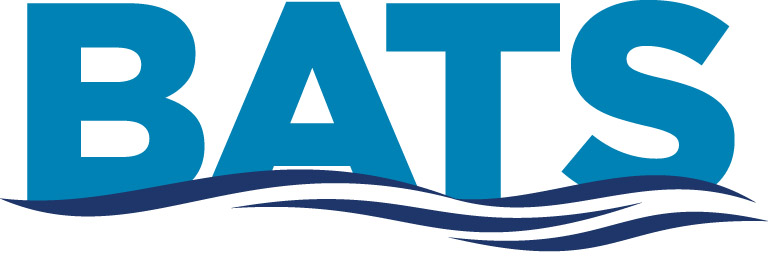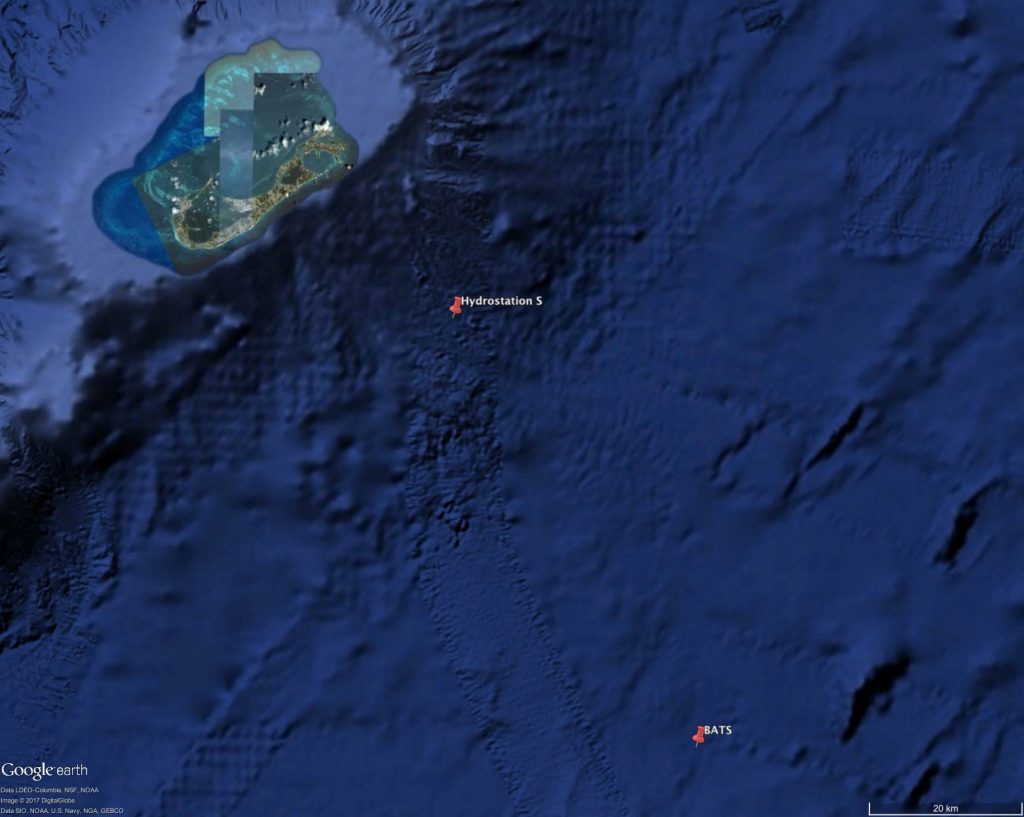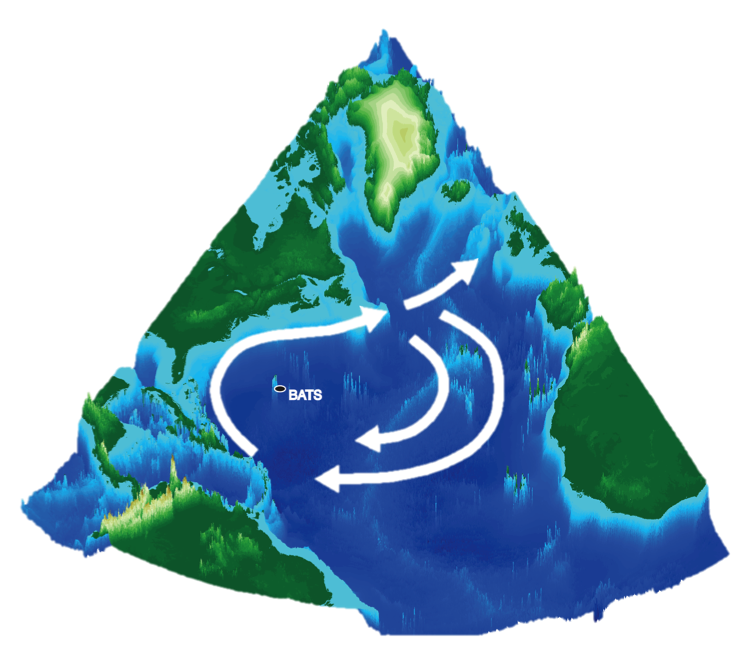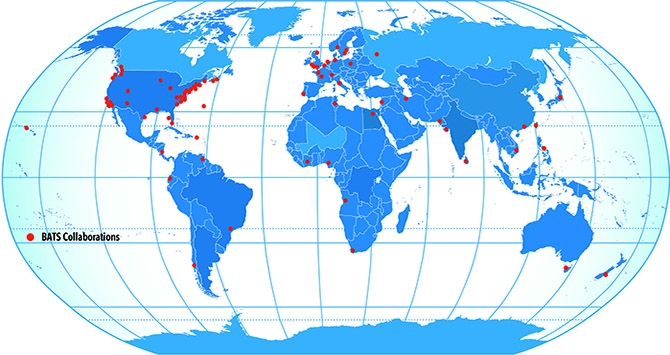Bermuda Atlantic Time-series Study (BATS) History
Scientific investigation often generates as many questions as it answers. This has been particularly true in the area of oceanography. Big-picture questions (such as “How does the ocean react to global climate change, and what role does it play in ecosystem balance?”) can be answered by in-depth analysis of data collected over a significantly long period of time.
In 1954, Dr. Henry M. Stommel initiated Hydrostation ‘S’ – a deep-water research mooring – to gather information on the physical nature of the ocean in an effort to address fundamental questions about currents and air-sea gas exchange. Since then, scientists have visited the station biweekly, resulting in the world’s longest-running time-series for physical oceanographic data, including temperature, salinity, and dissolved oxygen measurements.
The longevity and success of the program eventually led to BIOS linking with the U.S. Joint Global Ocean Flux Study (JGOFS) program to start, in 1988, the Bermuda Atlantic Time-series Study (BATS), another long-term time-series study examining biogeochemical cycles in the Sargasso Sea near Bermuda.
BATS was established to uncover mysteries of the deep by analyzing important hydrographic and biological parameters throughout the water column. Pursuing this goal has enabled BATS scientists — and oceanographers worldwide — to completely revise their perspective on the ocean’s physical, chemical and biological processes. Sustained time-series data collection has challenged longstanding paradigms and has begun to uncover exciting new observations about the ocean.
- The location of BATS relative to major deep-water currents from the Arctic and Antarctic
- The location of BATS relative to Sargasso Sea and Atlantic Ocean currents
BATS and Hydrostation S have proven invaluable in ocean and atmospheric science by producing data that helps us better understand global climate change and the ocean’s responses to variations in the Earth’s atmosphere. BATS and other deep-ocean time-series have highlighted the importance of biological diversity in understanding biological and chemical cycles, including “active” carbon transport by migratory zooplankton as part of the ocean’s Biological Carbon Pump. BATS scientists have also focused on carbon exchange between the ocean and atmosphere, seeking an understanding of how the ocean responds to increased levels of atmospheric carbon dioxide.
Data from BATS and Hydrostation S have been used to address a variety of other topics, including:
- Temporal variations in nutrient concentrations of surface water;
- Phytoplankton blooms;
- Responses of calcifying organisms (e.g., corals) to ocean acidification;
- Ecosystem models for the Sargasso Sea and North Atlantic;
- Plankton diversity and community structure;
- Mesoscale eddies and their impacts on phytoplankton community structure and carbon sequestration;
- The role of dissolved organic carbon in the global carbon cycle;
- The impacts of low-frequency climate patterns (such as the El Niño Southern Oscillation) on biogeochemical cycling
The BATS team, along with its collaborators worldwide, continues to explore open and active oceanographic questions, and to integrate new methodologies. By maintaining an innovative approach to ocean science, we preserve our position on the cutting edge of this vast and exciting discipline.
Contact Information
Dr. Nicholas Bates, PI
Senior Scientist and Director of Research, BIOS
nick.bates@bios.edu
Dr. Rod Johnson, Co-PI
Assistant Scientist, BIOS
rod.johnson@bios.edu
Dr. Michael Lomas, Co-PI
Senior Research Scientist, Bigelow Laboratory for Ocean Sciences
mlomas@bigelow.org
Dr. Deborah Steinberg, Co-PI
CSX Professor of Marine Science, Virginia Institute of Marine Sciences
debbies@vims.edu





